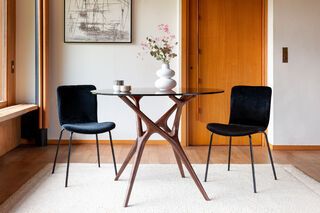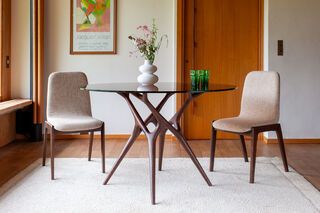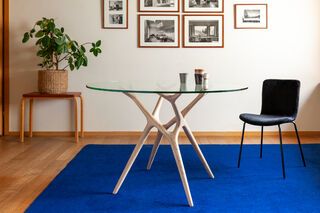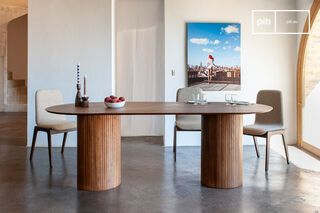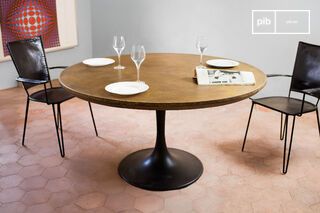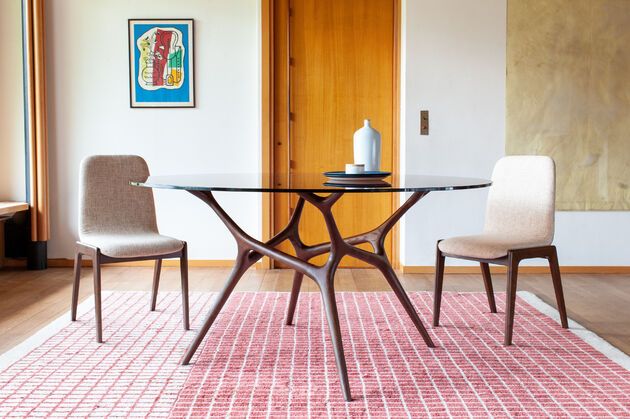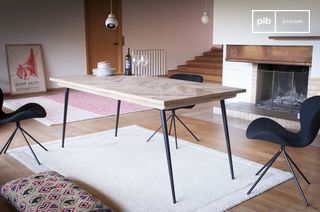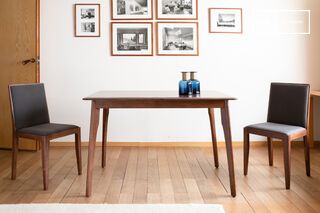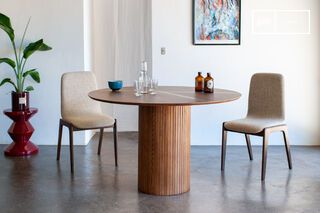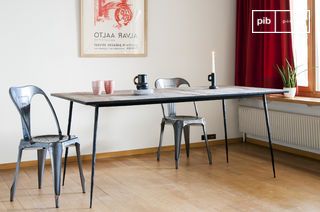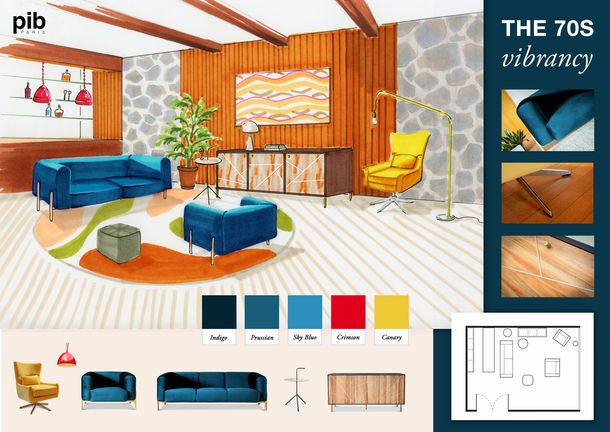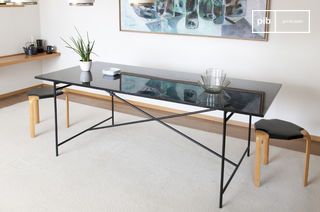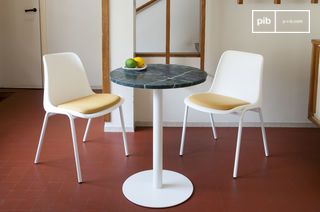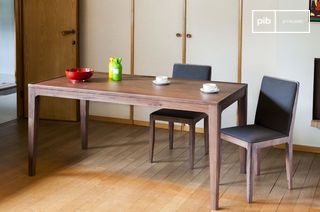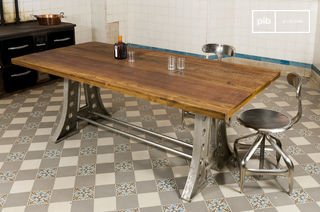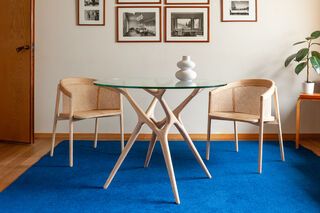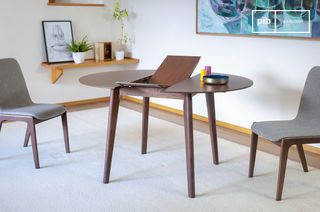Dining room tables
Dining room tables structure the space around which meals, exchanges and circulation take place. A dining room table occupies a central position, both functional and spatial. The choice of shape and materials determines the room's legibility and its ability to accommodate daily or occasional use. Rectangular tops for elongated rooms, round formats for open spaces: each configuration responds to a specific layout logic. Wood, metal, glass or ceramics shape the final look without detracting from the intended use. read more >
Filters
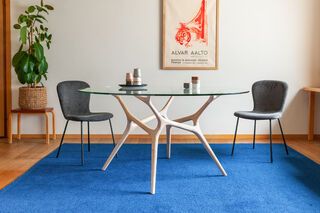
Round glass table with light solid ash for 8 peopleSylvae
£1560 £1400-10%
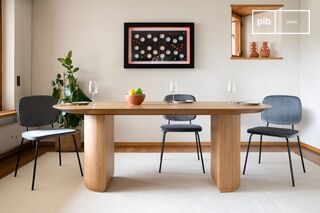
Large light wood dining tableSolna
£1805 £1260-30%
Salon Days
Exclusive discounts up to -30% for 2 weeks.
Offer valid while stocks last.
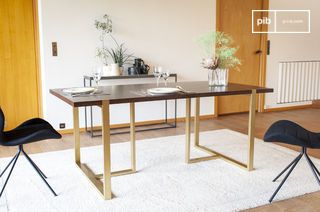
Walnut dining tableNeutra
£950 £665-30%
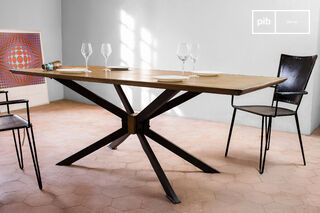
Brass dining tableLiverpool
£1820 £1455-20%
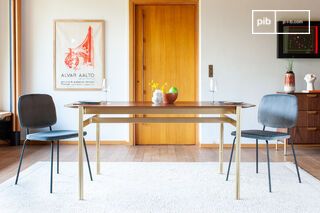
Dark wood dining tableAurora
£1070 £860-20%
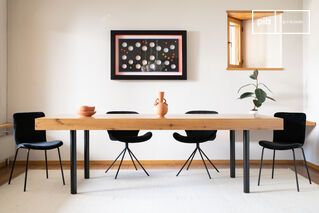
Large light wood dining tableAvesta
£1210 £1090-10%
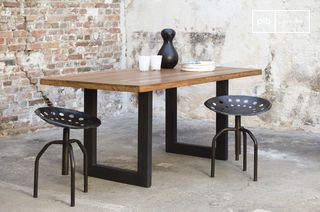
Teak wood tablePeterstivy
£970 £870-10%
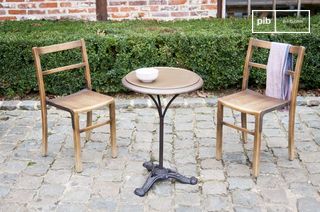
Round bistro table wood and metalVaiana
£480 £385-20%
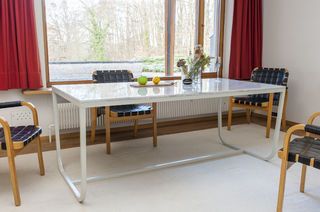
Nordic marble dining tableGällo
£2045 £1640-20%
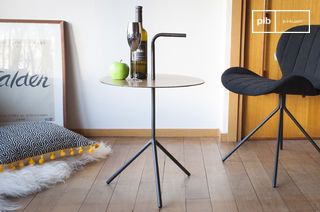
Portable table with handleXylème
£360 £285-20%
Choosing a dining room table according to available space
The dining room table defines a stable center in the room, around which seating, passage points and connections with other elements are distributed: sideboard, kitchen, windows. It should be chosen according to the available surface area and the type of traffic expected. A minimum clearance of 75 cm around the table is generally required to allow fluid use of chairs and daily passage.
The shape of the tabletop also guides the relationship between the table and its surroundings. Rectangular models are suitable for elongated rooms or large volumes. Round or oval shapes limit visual breaks and facilitate conversation between guests. Square formats reinforce balance in symmetrical rooms, but require a larger space in proportion to their useful surface.
Materials and associated visual effects
The choice of materials for a dining table influences both the mood and the perception of the room. Solid wood, whether light or dark, introduces a solid, visible and stable material. It is suitable for frequent use and offers a warm surface, without overly shiny or contrasting effects. Glass, as a full top or combined with a metal base, visually lightens the table and allows light to pass through. It fits in well with small spaces or already dense compositions.
Metal, often used for bases, gives structure to the table without overloading its reading. It can be painted, patinated or left unfinished, depending on the desired effect. Ceramic and terrazzo offer a visually denser surface, sometimes textured or marbled. These materials are appreciated for their resistance to heat and easy maintenance, but they require particular attention to harmonization with floors and other furniture elements.
Whatever the material chosen, the table must maintain a coherence with the room as a whole. It can either extend a logic already present (repeating shades or textures), or introduce a controlled point of contrast. What's important is the legibility of the space once the table is in place, with or without a tablecloth, tabletop objects or direct light.
Capacity, daily use and adaptability
Capacity is an essential criterion when choosing a dining table. A standard 160 to 180 cm table accommodates 6 people without hindrance. Extendable models, with integrated or independent extensions, offer flexibility for punctually larger meals. Stability, ease of maintenance and ergonomic edges (sharp or smooth) are also important considerations, depending on the intended use. In a room where the table is also used for work or homework, a lightly textured, scratch-resistant top may be preferred. Some models are designed for mixed use, with proportions designed for everyday comfort without excess material.
Finally, the choice of seating should be anticipated as soon as the table is purchased. Cross, center or end legs determine the freedom of movement and placement of chairs. Consistency between the shape of the table and that of the seats helps maintain a functional and visual balance.
A well-chosen dining room table doesn't just occupy space: it regulates usage, supports circulation and structures the room over time. It's furniture that's at once stable, evolving and legible.
